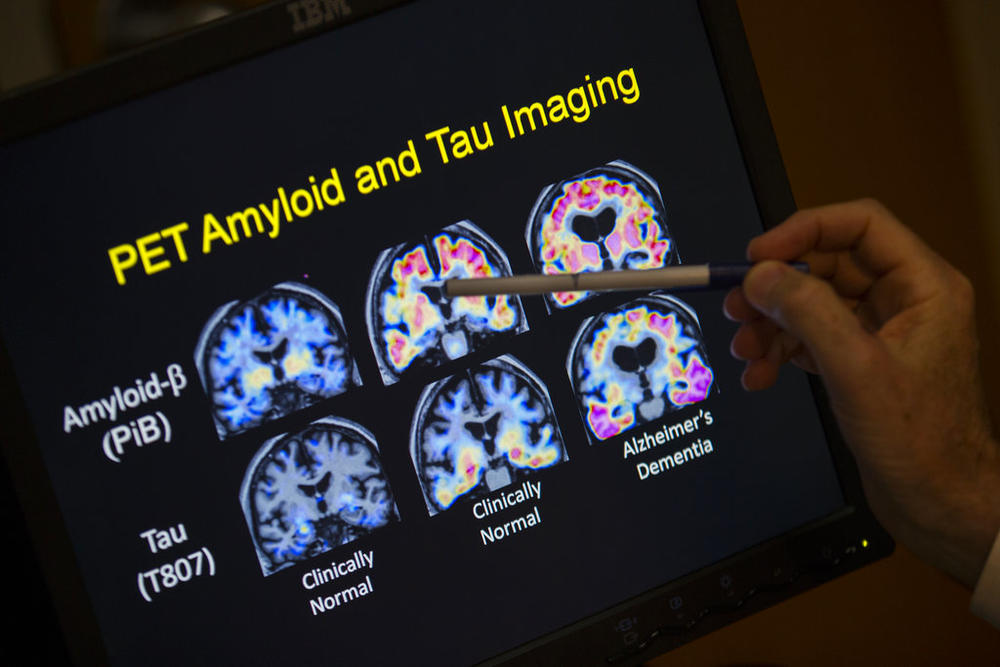
Caption
In this May 19, 2015, file photo, R. Scott Turner, Professor of Neurology and Director of the Memory Disorder Center at Georgetown University Hospital, points to PET scan results that are part of a study on Alzheimer's disease at Georgetown University Hospital in Washington. Government and other scientists are proposing a new way to define Alzheimer's disease. basing it on biological signs, such as brain changes, rather than memory loss and other symptoms of dementia that are used now.
Credit: (AP Photo/Evan Vucci, File)

